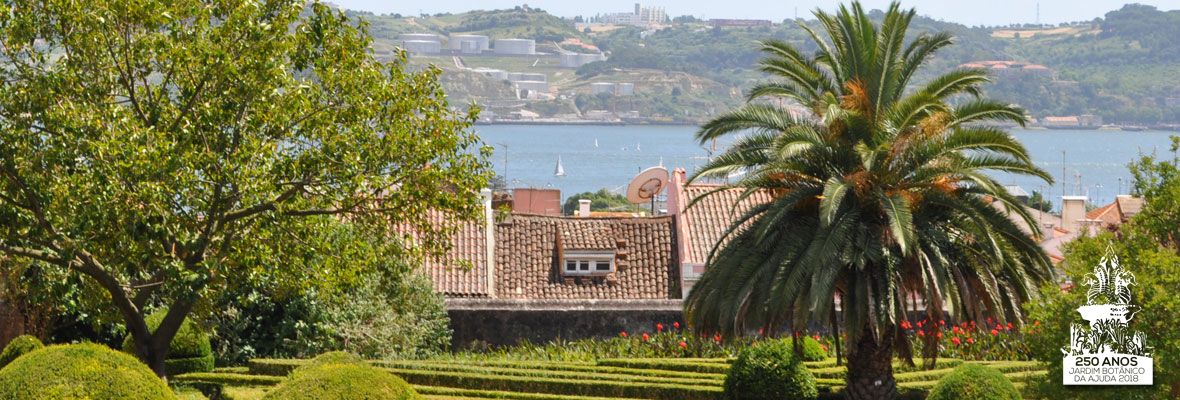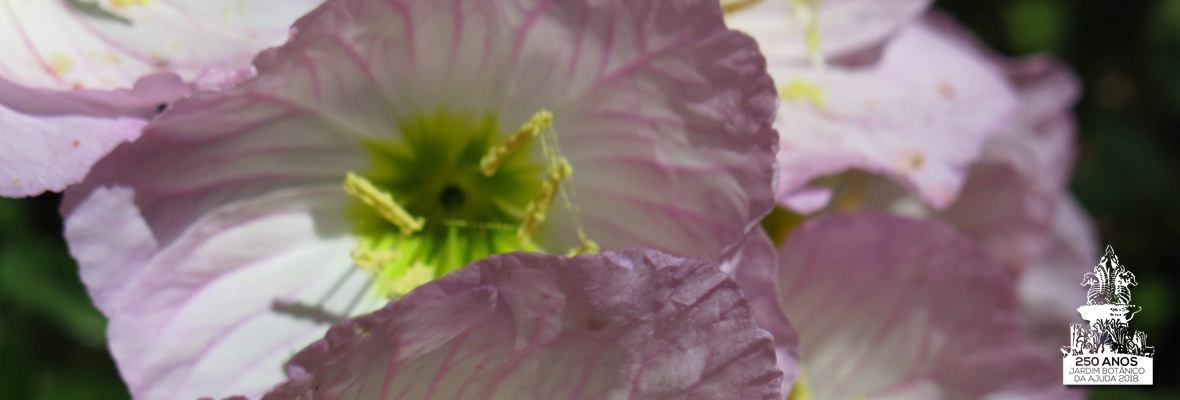About Jardim Botânico da Ajuda (JBA)
In 1755, most of the downtown area of the city of Lisbon was destroyed by a catastrophic earthquake and tidal wave. The king, D. José I, decided to move the royal residence to safer ground on the hillside of Ajuda. Refusing out of fear to live in any buildings made of stone, the king instead ordered the construction of a royal pavilion made entirely out of wood, which was completed in 1756. Once installed with his family, D. José ordered the construction of an adjoining botanical garden for the education and entertainment of his grandchildren, Prince José and Prince João (the future King João VI), sons of the king’s daughter, D. Maria I.
To build the garden, D. José sent for Domingos Vandelli, a naturalist from Padua, who started work in 1764. The Real Jardim Botânico da Ajuda (Royal Botanic Gardens of Ajuda) was founded around 1768 and was the first botanical garden in Portugal, occupying an area of 3.8 hectares and composed of two south-facing terraces, forming a unique vantage point from which visitors can enjoy a magnificent view of the River Tagus. In the late 18th century, botanical missions to Portugal’s overseas colonies greatly enriched the collection, which at that time grew to around 5,000 specimens.
During the French invasions of the early 19th century, many of the garden’s botanical specimens were removed to Paris by order of General Junot. However, the garden survived, and through the professional care of Felix de Avelar Brotero managed to regain its prestige. In 1873, with the completion of another botanical garden at the Escola Politécnica, the botanical function of the Ajuda Garden came to an end. The garden passed to the administration of the royal palace and, once again, became a space of leisure for the Portuguese royal family.
With the establishment of the Portuguese Republic in 1910, the garden was renamed as the Jardim Botânico da Ajuda and placed under the care of the Instituto Superior de Agronomia (ISA), which performed a major renovation. The garden has been open to the public ever since, and in recent years has been used to support the ISA course in Landscape Architecture and other courses of Lisbon University.
At the end of the 20th century, the ISA applied successfully for European Commission funding to conserve the architectural heritage of the garden. The funding allowed for important restoration works: between 1994 and 1997, under the guidance of Professor Cristina Castel-Branco, the architectural and sculptural features of the two terraces were cleaned and restored, and the stone beds that house the botanical collection on the upper terrace were rebuilt according to drawings from 1869. The checkerboard-like pattern of 1,200 stone beds containing herbaceous and small shrubs is organised by phytogeographic area, according to the layout of the bicentennial trees already established in this area.
At the same time, the cottage near the Calçada da Ajuda gate was restored and the Jardim de Aromas (scent garden) constructed. In a lively addition to the garden, the greenhouse near the Calçada do Galvão gate was converted into a restaurant, Estufa Real.
Also on this occasion the Association of Ajuda Botanic Garden Friends was founded. This Association has an annual program of different kinds of courses related to nature and gardening, organizes cultural excursions all over the world, in particular, to gain knowledge of the art and history of Gardens but also for observation of Nature, and it is responsible for the restoration works made to the JBA in the last years.
Despite the many challenges faced by the Jardim Botânico da Ajuda, most of the original vegetal elements remain to this day, especially its magnificent trees, which include a Dracaena draco, a Ficus microcarpa and a Ficus macrophylla, a Schotia afra and a Ocotea foetens. The live collection in open space has been rebuilt over the years and today numbers 1,602 taxa, all of them labelled.
The collection of the orchids of D. Luís I is being restored by Tuliikkii and Pekka Ranta, a Finnish couple who have a collection of 10 000 orchids, at this moment divided between JBA and Jardim Botânico do Faial. The collection of cactus and other xerophytic plants is also under development in another green house.
Under the current direction, a seed bank (Banco de Sementes Prof. João do Amaral Franco) was founded in 2010 and since this date has contributed to the Millennium Seed Bank and store of Serra da Arrábida (a protected area) seeds, according to biodiversity conservation principles.
The Jardim Botânico da Ajuda is a space for everyone. Besides its educational and research functions, its airy terraces are the perfect place to go for a gentle stroll and take in the serene beauty of the River Tagus flowing below.
It has a programme of guided tours for schools and the general public and organizes very popular cultural events like the Spring Festival.
For more information visit: www.isa.ulisboa.pt/jba















